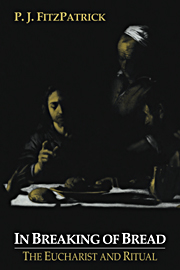4 - Signs and disguises
Published online by Cambridge University Press: 05 November 2009
Summary
AN ACQUISITION AND ITS DANGER
A mark of all Christian Churches today in the West is a revived awareness of the resurrection, and the recent authors we have considered shew this awareness in a eucharistic setting. We saw in the second chapter how de Baciocchi stresses the link between Passover and Eucharist (25). Smits points out the essential unity of the mystery of faith – the obedience of Christ even to the death of the cross in order to send us his Spirit (47). For Schoonenberg, reflexion on the Eucharist must begin with the Risen Lord's presence in the community (16). Schillebeeckx would like even greater stress laid upon this presence in eucharistic theology (1967: 109–10 [1968: 138, where for ‘much greater’ read ‘even more strongly’ – Schillebeeckx has nog sterker]).
This revived awareness is obviously not a clean break with the past, but the recent authors are only a few among many examples of the real change in emphasis there has been. I set down my own joy at the change, and shall be drawing out consequences of it in the next chapter. Here and now I must set down my unease at how the resurrection is being used in some texts from these authors. I can best describe my unease by going back to a distinction drawn in the first chapter between formulations and recipes (pp. 40–1). I drew the distinction there in a setting that was complex, but the distinction itself is not recondite: a formulation expresses what is to be achieved, a recipe offers ways of achieving it.
- Type
- Chapter
- Information
- In Breaking of Bread , pp. 133 - 174Publisher: Cambridge University PressPrint publication year: 1993

